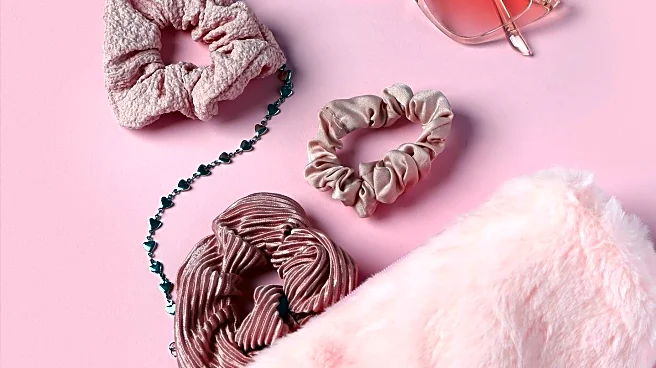What's Happening?
Joan Mitchell, an influential American painter, is celebrated not only for her contributions to abstract expressionism but also for her distinctive personal style. Born in Chicago to a wealthy family, Mitchell's upbringing was marked by a blend of artistic
and intellectual influences. Her father, James Mitchell, was a physician and president of the American Dermatological Association, while her mother, Marion Strobel, co-edited Poetry magazine. Despite her affluent background, Mitchell's style was characterized by a rebellious streak, often opting for casual and comfortable clothing such as jeans, corduroys, and untucked Oxford shirts. Her fashion choices reflected her anti-style philosophy, paralleling her approach to painting, which she described as having nothing to do with trends. Mitchell's style was a statement of authenticity, resonating with her artistic identity and the circles she navigated between her family's expectations and the artist community.
Why It's Important?
Joan Mitchell's personal style is significant as it underscores the intersection of art and fashion, highlighting how personal expression can transcend traditional boundaries. Her approach to clothing, much like her art, was a form of resistance against societal norms, embodying a spirit of individuality and authenticity. This has broader implications for the fashion industry, which often looks to artists for inspiration in creating new trends. Mitchell's style serves as a reminder of the power of personal expression in shaping cultural narratives, influencing both the art world and fashion designers who seek to capture the essence of rebellion and authenticity in their creations. Her legacy continues to inspire those who value originality over conformity, impacting how fashion is perceived and appreciated.
What's Next?
As the art world continues to celebrate Joan Mitchell's contributions, her personal style remains a point of interest for fashion historians and designers. Exhibitions and retrospectives of her work may further explore the connection between her artistic output and her fashion choices, offering deeper insights into her influence on contemporary style. Fashion designers may continue to draw inspiration from Mitchell's anti-style philosophy, incorporating elements of her aesthetic into modern collections. Additionally, discussions around the role of personal expression in art and fashion are likely to persist, encouraging a broader appreciation for individuality in creative fields.
Beyond the Headlines
Joan Mitchell's style challenges conventional notions of femininity and fashion, offering a nuanced perspective on the role of women in the art world. Her preference for practical and comfortable clothing over traditional feminine attire reflects broader cultural shifts towards gender equality and self-expression. This aspect of her legacy invites further exploration into how fashion can serve as a medium for challenging societal norms and promoting inclusivity. Mitchell's influence extends beyond her paintings, contributing to ongoing dialogues about the relationship between art, fashion, and identity.














